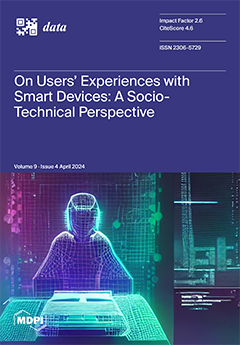Open AccessReview
Mapping of Data-Sharing Repositories for Paediatric Clinical Research—A Rapid Review
by
Mariagrazia Felisi, Fedele Bonifazi, Maddalena Toma, Claudia Pansieri, Rebecca Leary, Victoria Hedley, Ronald Cornet, Giorgio Reggiardo, Annalisa Landi, Annunziata D’Ercole, Salma Malik, Sinéad Nally, Anando Sen, Avril Palmeri, Donato Bonifazi and Adriana Ceci
Cited by 2 | Viewed by 3296
Abstract
The reuse of paediatric individual patient data (IPD) from clinical trials (CTs) is essential to overcome specific ethical, regulatory, methodological, and economic issues that hinder the progress of paediatric research. Sharing data through repositories enables the aggregation and dissemination of clinical information, fosters
[...] Read more.
The reuse of paediatric individual patient data (IPD) from clinical trials (CTs) is essential to overcome specific ethical, regulatory, methodological, and economic issues that hinder the progress of paediatric research. Sharing data through repositories enables the aggregation and dissemination of clinical information, fosters collaboration between researchers, and promotes transparency. This work aims to identify and describe existing data-sharing repositories (DSRs) developed to store, share, and reuse paediatric IPD from CTs. A rapid review of platforms providing access to electronic DSRs was conducted. A two-stage process was used to characterize DSRs: a first step of identification, followed by a second step of analysis using a set of eight purpose-built indicators. From an initial set of forty-five publicly available DSRs, twenty-one DSRs were identified as meeting the eligibility criteria. Only two DSRs were found to be totally focused on the paediatric population. Despite an increased awareness of the importance of data sharing, the results of this study show that paediatrics remains an area in which targeted efforts are still needed. Promoting initiatives to raise awareness of these DSRs and creating ad hoc measures and common standards for the sharing of paediatric CT data could help to bridge this gap in paediatric research.
Full article
►▼
Show Figures





